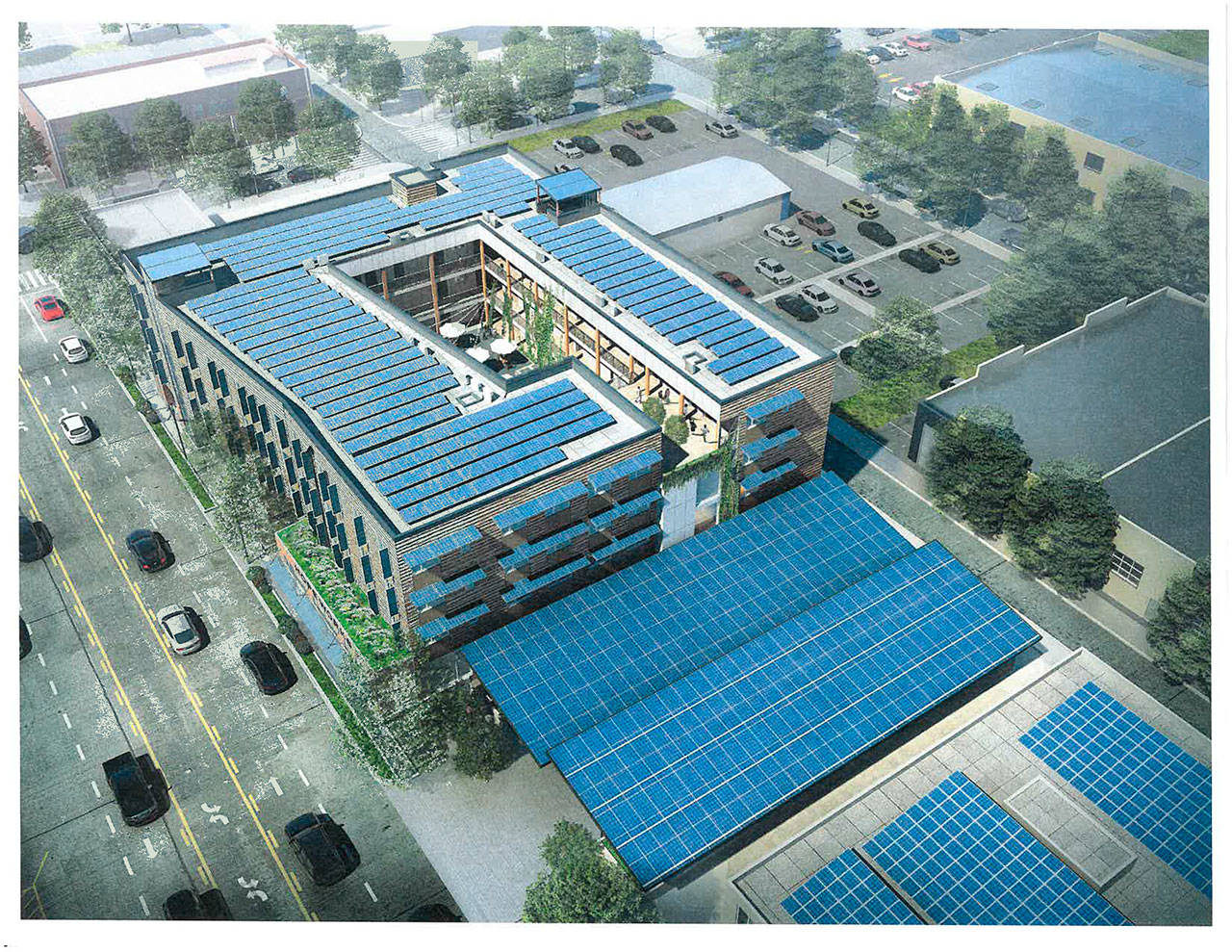By The Herald Editorial Board
Residents for the third major supportive housing development opening in Everett this year — HopeWorks Station at 3315 Broadway — are expected to begin moving in this week as construction wraps up and programs and staff continue setting up.
The 67,000-square-foot development is a shared project of separate but affiliated programs: Housing Hope, the 32-year-old housing program for homeless and low-income families throughout the county; and HopeWorks, a career and life skills program that since 2011 has offered training through culinary, retail and landscaping internships.
Phase II of HopeWorks Station includes 65 units of affordable housing that will be administered by Housing Hope, including studio, one-bedroom and two-bedroom units for the homeless, including military veterans, youths and young adults and parents working toward being reunited with their children, a partnership with the county’s family drug treatment court program. Along with offices for both programs, the first floor of the station has space for training and meeting rooms and HopeWorks’ culinary programs, formerly known as CafeWorks but now rebranded as Kindred Kitchens.
That close location of housing and career training and integration of those programs is key, said Ed Petersen, founder of both Housing Hope and HopeWorks and now chief strategic officer for HopeWorks, during a walk-through of the facility last week.
“We figured we’d take all we had learned and create a comprehensive model that really got at the heart of what we started to do, and that is breaking the cycle of poverty,” Petersen said.
With $1.8 million in loans from 39 individuals and groups, HopeWorks bought and renovated the current building that has housed its programs since 2013 along with the vacant adjacent property on which the new development was built. Those loans, Petersen said, were repaid in 2018, but HopeWorks went back to its investors and sought renewed loans to provide initial funding for the second phase.
The building itself is a model and training ground for the transformation of lives that both programs seek. Along with the job-specific skills clients learn, HopeWorks also stresses what Petersen called “soft skills,” life lessons and other habits, such as punctuality, task completion and social skills used in the workplace and with neighbors and program staff.
One example Petersen pointed to is the building’s environmental sustainability. The complex’s rooftops are nearly covered in solar panels, enough to provide all the energy needs of the three residential floors and possibly generate as much as 5 percent more to put on the grid. But that will have to come with the help of residents, who will participate in an energy efficiency pilot project with Snohomish County PUD to reduce the electrical demand of each unit to about half that of a comparable apartment, Petersen said.
As well, residents will be encouraged to recycle, and the building’s basement has 89 bike racks, enough for one for each resident as well as staff and customers.
The environmental stewardship, Petersen said, is part of the hope and expectation for development of a community of shared responsibility at HopeWorks Station.
While changing lives and breaking the cycle of poverty are significant accomplishments, the attractive building with a mix of public and private spaces will also serve as an anchor in the revitalization of Broadway and the Everett Station district, helping to make the district more comfortable and enjoyable for everyone who lives and works in the neighborhood.
Phase II of HopeWorks station was built with a range of funding, including about 55 percent from tax credits, 13 percent from city, county, state and federal grants and assistance, 12 percent from its investors and a final 20 percent from a capital campaign.
With a capital goal of $5.7 million, HopeWorks is now about $150,000 short of that mark and has began a final fundraising push, inviting donors to “adopt” an apartment for $10,000 to $25,000 or contribute $5,000 to $9,000 to place a name on its donor wall in the building’s lobby. But donations of any amount can be made.
HopeWorks Station is one of three such supportive housing developments that opened in Everett this year. In April, Cocoon House opened 40 units of housing and counseling and assistance for homeless and at-risk youths and young adults at its new facility at Colby Avenue and 36th Street. In July, Catholic Community Services opened Clare’s Place on Berkshire Drive, providing 65 units and services for chronically homeless people.
In January, Snohomish County Human Services took its annual point-in-time count and documented more than 1,100 homeless people in the county, the highest count since 2012.
The three supportive housing developments will help ease those numbers, especially as individuals who benefit from the programs get the services they need, advance in careers, begin to rise out of poverty and move out into the community, opening up a space for the next person.
Housing Hope and HopeWorks, as well as Cocoon House and Catholic Community Services, have developed models that can be used again in Everett and other cities in the county. Other projects like this can and should follow and deserve the support of the larger community.
“What we’re bringing,” Petersen said, “is a population of people who are going to be constructive participants in creating a vibrant community.”
HopeWorks Station open house
The public is invited to a ribbon-cutting and open house at HopeWorks Station from noon to 4 p.m., Friday, Oct. 11, at 3315 Broadway, Everett.
To donate to HopeWorks capital campaign, go to www.hopewrks.org/herald or call 425-610-4931.
Talk to us
> Give us your news tips.
> Send us a letter to the editor.
> More Herald contact information.

























